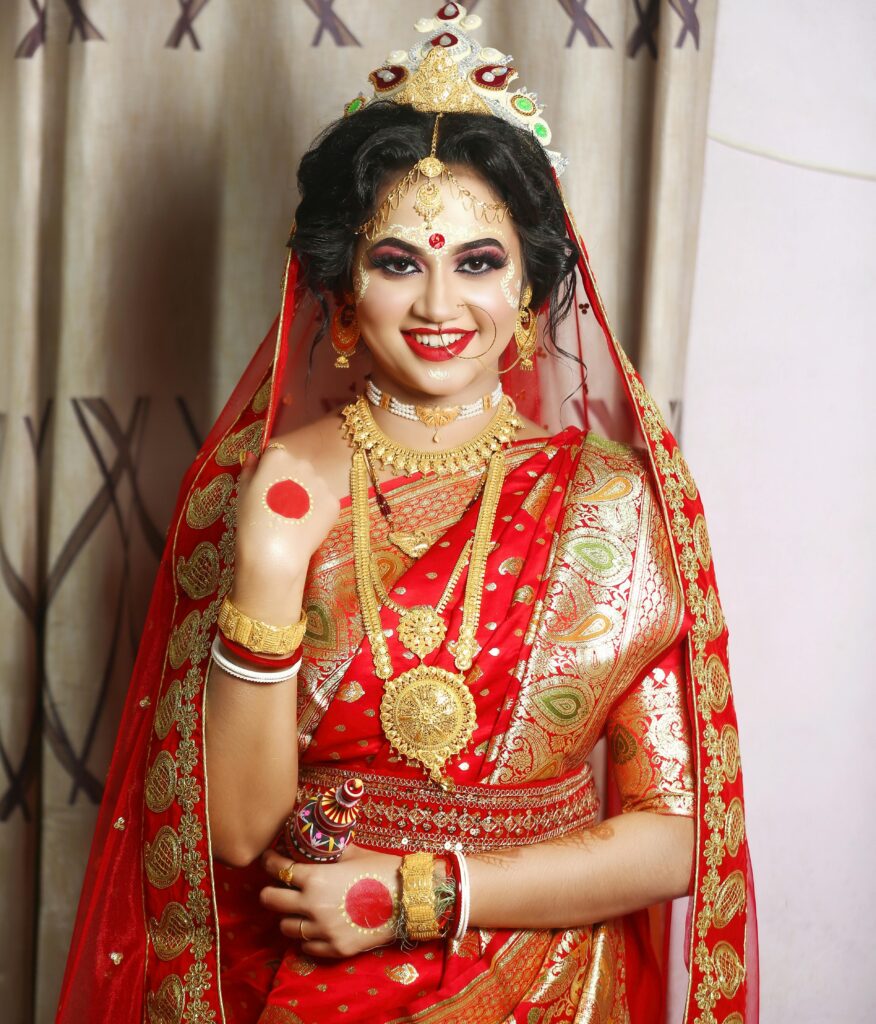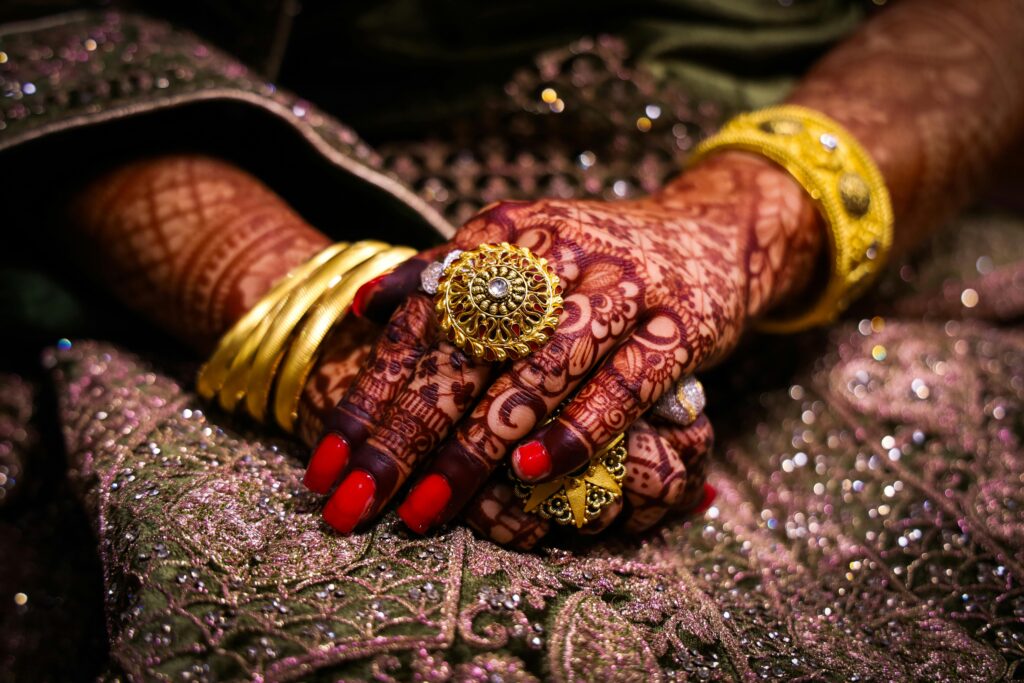Solah Sringar, which translates to “sixteen adornments,” represents the quintessential art of beautification in Hindu culture. Deeply rooted in tradition, Solah Sringar encompasses the adornment practices that enhance a woman’s beauty, believed to be both a celebration of her physical form and a means to invoke divine blessings. This ritualistic embellishment is most prominently observed during significant life events such as weddings, festivals, and religious ceremonies.

The Origins and Significance of Solah Sringar
The tradition of Solah Sringar dates back thousands of years and finds mentions in ancient texts, including the Vedas and epics like the Ramayana and Mahabharata. It is believed that these sixteen adornments are inspired by the depiction of goddesses, especially Goddess Parvati, who is often illustrated in the height of her beauty and grace. The ritual is not merely about physical decoration but is deeply symbolic, representing purity, prosperity, marital bliss, and the invocation of divine energy.
The Sixteen Adornments: An Overview
1. Bindi: A dot or decorative mark on the forehead, symbolizing the third eye and a focal point of wisdom.
2. Sindoor: Vermilion powder applied along the parting of a married woman’s hair, signifying her marital status.
3. Maang Tika: An ornate piece of jewellery worn on the forehead, usually with a pendant that falls on the hairline.

4. Kajal: Kohl applied around the eyes to enhance their beauty and protect against evil spirits.
5. Nath: A nose ring or stud, often connected to the ear by a chain, enhancing the facial features.
6. Earrings: Ornate earrings, signifying femininity, and elegance.
7. Necklace: Multiple layers of necklaces, each with its own significance, from chokers to long chains.
8. Mangalsutra: A sacred necklace worn by married women, symbolizing marital fidelity and prosperity.
9. Bajuband: Armlets worn on the upper arm, signifying strength, and beauty.
10. Bangles: A multitude of bangles worn on the wrists, representing prosperity.
11. Mehendi: Intricate henna designs applied to the hands and feet, symbolizing joy and auspiciousness.

12. Rings: Rings on the fingers, particularly the ring finger, often representing marital status.
13. Kamarbandh: A waist belt made of gold or silver, enhancing the waistline.
14. Anklets: Ornate ankle bracelets, often with tiny bells, representing marital status and feminine beauty.

15. Toe Rings: Worn on the toes by married women, symbolizing marital status and vitality.
16. Perfume (Itar): Fragrant oils applied to the body, signifying purity and divinity.
Solah Sringar: The Ritual and Its Cultural Importance
The Solah Sringar process is both an art and a ritual. It begins with a thorough cleansing and purification, followed by systematic adornment with each of the sixteen elements. This ritual is often performed with the help of family members, especially during weddings, where the bride is prepared with great care and affection.
Each element of Solah Sringar is laden with cultural significance and spiritual symbolism. The bindi, for instance, is believed to protect against bad luck and evil spirits. The mehendi is not just decorative but also a symbol of fertility and love. The sindoor and mangalsutra are powerful symbols of marital status, reflecting a woman’s role and responsibilities within her family and society.
Modern Interpretations and Practices
While traditional Solah Sringar remains a revered practice, its modern interpretations have also gained popularity. Contemporary brides and women may choose to adapt the sixteen adornments to suit their personal style and the times. Minimalistic and fusion designs are now common, blending traditional elements with modern aesthetics. Despite these changes, the essence of Solah Sringar—honouring the divine feminine and celebrating beauty—remains intact.
Conclusion
Solah Sringar is more than a beautification process; it is a cultural treasure that encapsulates the richness of Hindu traditions and the deep-seated reverence for feminine beauty and grace. Whether in its traditional form or modern adaptations, Solah Sringar continues to be a cherished practice, reflecting the timeless allure of Hindu culture and its celebration of womanhood.
About Author – Shraddha Pathak
Shraddha Pathak hails from the vibrant cultural landscape of India, having been born in Mathura and raised in Kolkata.
She pursued her education in Bangalore, where she laid the foundation for a career in dentistry. Shraddha practiced as a dentist in India until 2016, after which she took a break to focus on child care.
Driven by a passion for data and health, she later pursued a master’s degree in Health Data Science from the University of Manchester. Currently, Shraddha is making impactful contributions as a Population Health Data Scientist.
We hope you like this new article. Please share your feedback by commenting below . Also, don’t forget to share the article with Friends and Family










8 Comments
Really interesting. Great article Shraddha!
Beautifully Articulated👌
Thanks Shivani for your feedback.
Thanks for sharing those insightful details about each things.
Thank you Abhishek for your feedback
Amazing detailed explanation, really interesting and informative, loved it !!
Thank you Sheena for your feedback
Excellent Article and well articulated.